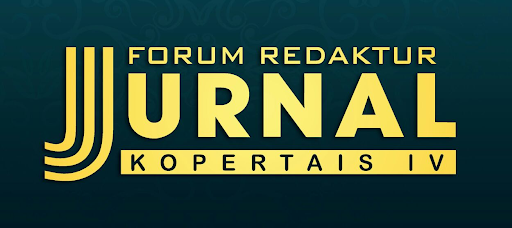PENERAPAN METODE TARKIBIYYAH TAHLILIYAH DALAM PEMBELAJARAN QIRA’AH UNTUK MENINGKATKAN HASIL BELAJAR SISWA
DOI:
https://doi.org/10.35316/lahjah.v1i1.725Keywords:
Qiro'ah Learning; Student Learning Outcomes; Tarkibiyyah Tahliliyah MethodAbstract
The purpose of this study are (1) to find out the learning outcomes of students at SDIT Atssurayya in qira’ah learning before using the tarkibiyyah tahliliyah method; (2) to find out the learning outcomes of students at SDIT Atssurayya in qira’ah learning after using the tarkibiyyah tahliliyah method; (3) to find out the increase in student learning outcomes in learning qira’ah. This research uses a quantitative approach and the method of quasi-experimental with a kind of one-group pretst and posttest design. The data collection techniques used were interviews, observation and tests. The results of this study note that student learning outcomes in learning qira’ah before the use of the tarkibiyyah tahliliyah method obtained an average yield of 69.31 and showed results that were not in accordance with the interpretation standards. And student learning outcomes after the use of the Tarkibiyyah tahliliyah method obtained an average result of 81.17 and showed good results in accordance with interpretation standards. Thus that the application of the method of tarkibyyah tahliliyah in learning qira’ah gives an increase in student learning outcomes with a percentage of 4% which shows the results that are in accordance with the criteria for the value of N-Gain.
Downloads
References
Moh Ainin, “Fenomena Demotivasi dalam Pembelajaran Bahasa Arab di Madrasah: Penyebab dan Alternatif Pemecahannya”. Pidato Pengukuhan Guru Besar sebagai Guru Besar dalam Bidang Pembelajaran Bahasa Arab, 1Pada Fakultas Sastra (FS) UM, 2011.
Arikunto, Suharsimi. Prosedur Penelitian. Jakarta : Rineka Cipta, 2013.
Arikunto, Suharsimi. Dasar Dasar Evaluasi Pendidikan. Jakarta : PT Bumi Aksara, 2009.
Kumaravadivelu, Understanding Language Learning: From Method to Postmethod, London: Lawrence Erlbaum Associates Publisher, 2006,.
Mardiah Kalsum Nasution, ‘Penggunaan Metode Pembelajaran dalam Peningkatan Hasil Belajar Siswa’, Jurnal Ilmiah Bidang Pendidikan Studia Didakta, Vol 11.No 1. (2007).
Muhajir. Arah Baru Pengajaran Bahasa Arab Filsafat Bahasa, Metode dan Pengembangan Kurikulum. Yogyakarta: Fakultas Tarbiyah dan Keguruan UIN Sunan Kali Jaga Yogyakarta, 2017.
Radiah, ‘Metode Pengajaran Bahasa Arab di SMP Muhammadiyah 10 Yogyakarta (Classroom Action Research) Tahun ajaran 2008-2009’, Skripsi Pendidikan Bahasa Arab UIN Sunan Kali Jaga, 2009.
Ruseffendi, HET,Statistika Dasar Untuk Pendidikan, Bandung: IKIP Bandung, 1998.
Sudjana. Metode Statistika. Tarsito; Bandung, 2001.
Sugiyono. Metode Penelitian Kuantitatif, Kualitatif, dan R & D. Bandung : Alfabeta, 2013.
Suprijono, Agus. Cooperative Learning Teori dan Aplikasi PAIKEM.Yogyakrta. Pustaka Pelajar, 2016.
Tu‟aimah, Rusydī Ahmad. Al mahārāt al Lugawiyyah: Mustawayātihā Tadrīsihā ṣu‟ûbātihā, ûbātihā,(Cairo: Dar el Fikr el Arabī), 2004.
Wahyudin, Dedih.2016. Metodologi Pembelajatran Bahasa Arab Bagi Penutur Asing. Bandung
Downloads
Published
How to Cite
Issue
Section
License
Authors who publish with this journal agree to the following terms:
- Authors retain copyright and grant the journal right of first publication with the work simultaneously licensed under a Creative Commons Attribution-ShareAlike 4.0 International License that allows others to share the work with an acknowledgement of the work's authorship and initial publication in this journal.
- Authors are able to enter into separate, additional contractual arrangements for the non-exclusive distribution of the journal's published version of the work (e.g., post it to an institutional repository or publish it in a book), with an acknowledgement of its initial publication in this journal.
- Authors are permitted and encouraged to post their work online (e.g., in institutional repositories or on their website) prior to and during the submission process, as it can lead to productive exchanges, as well as earlier and greater citation of published work.



























_by_Matematohir.jpg)


